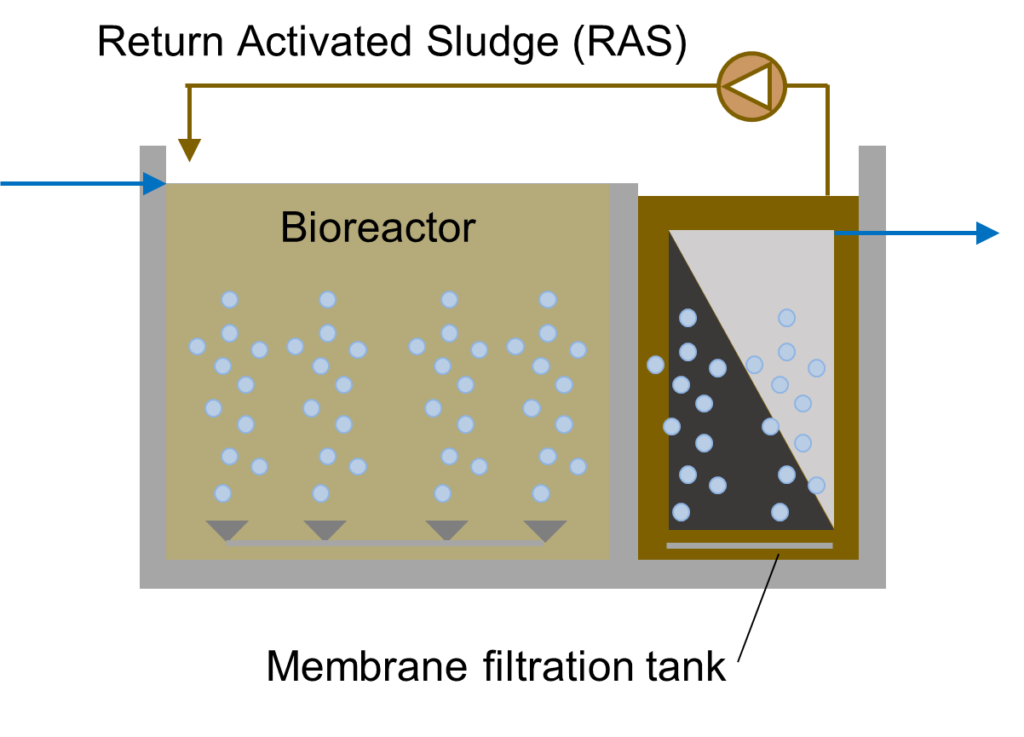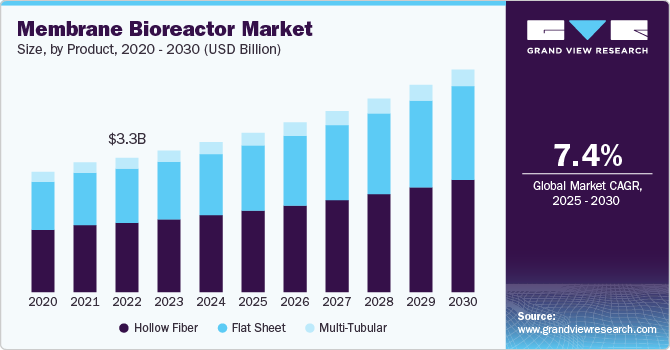Understanding Membrane Layer Bioreactors: The Future of Wastewater Treatment
Membrane bioreactors (MBRs) stand for a noteworthy advancement in the area of wastewater treatment, incorporating biological processes with advanced membrane purification to enhance effluent quality. As international water deficiency and stringent regulative frameworks become significantly pressing problems, MBR innovation offers a reliable response with its capability to lessen footprint and maximize source recovery. The fostering of MBRs is not without its challenges, which warrant careful factor to consider. What are the vital factors affecting their execution and long-term stability in different contexts? The solutions might improve our method to wastewater administration.
What Are Membrane Bioreactors?

The core parts of MBR systems consist of a bioreactor where microbial activity happens and a membrane layer system that filters the mixed liquor. This double functionality allows the synchronised degradation of raw material and solid-liquid splitting up in a solitary action. MBRs can run in both submerged and outside configurations, with submerged systems being a lot more common as a result of their compact layout and functional efficiency.
The adoption of MBR modern technology has actually gained grip in different applications, ranging from metropolitan wastewater therapy to industrial effluent management. MBRs are especially advantageous in circumstances where area is rigid or minimal effluent quality standards need to be fulfilled. By maintaining a high focus of bacteria within the bioreactor, MBRs improve the destruction of organic contaminants, consequently yielding greater treatment efficiencies compared to traditional techniques.
Secret Advantages of MBR Technology
The integration of organic treatment with membrane layer filtering in MBR systems uses numerous benefits that set it besides conventional wastewater therapy methods. One of the key advantages is the boosted effluent high quality. MBRs successfully get rid of put on hold solids and microorganisms, achieving higher degrees of purification that meet stringent discharge standards and help with water reuse applications.

An additional substantial advantage is the reduced sludge manufacturing. MBR systems create much less excess sludge, leading to reduced disposal prices and a decline in ecological influence. The closed nature of the membrane layer system reduces the threat of smell exhausts and boosts overall procedure control.
Finally, MBRs are versatile and versatile, making them appropriate for various wastewater types, consisting of industrial and local sources. The capacity to integrate with innovative treatment modern technologies better boosts their efficiency, making MBRs a promising service for the future of wastewater administration.
Difficulties and Limitations of MBRs
While MBR innovation offers numerous benefits, it likewise faces a number of challenges and constraints that can impact its extensive adoption. One significant obstacle is the high funding and functional costs connected with MBR systems. The preliminary financial investment for membrane layer products and the essential framework can be substantial, making it much less easily accessible for smaller sized markets or districts.
Additionally, membrane layer best site fouling stays an essential issue that can lessen system efficiency and increase maintenance needs. Fouling takes place when solids, natural issue, or bacteria build up on the membrane surface area, leading to decreased permeability and needing constant cleansing or substitute.
One more restriction entails the complexity of the technology. MBR systems call for proficient employees for procedure and maintenance, which can be a barrier in regions with limited technical competence. Moreover, the disposal of spent membrane layers offers environmental issues, as the products are commonly not biodegradable and can add to throw away administration challenges.
Last But Not Least, while MBRs can successfully deal with a variety of wastewater, they may not appropriate for all applications, specifically those with high concentrations of fats, oils, and oils, demanding additional research and advancement to deal with these constraints.
Applications of Membrane Layer Bioreactors
In numerous fields, membrane bioreactors (MBRs) have emerged as a functional service for wastewater treatment (Membrane Bioreactor). Their applications span community, commercial, and agricultural settings, showcasing their versatility and effectiveness in varied atmospheres. In local wastewater therapy plants, MBRs dramatically improve effluent high quality, enabling for water reuse and minimizing the environmental impact of discharged wastewater
Industrially, MBRs are used in food and beverage handling, textile production, and pharmaceutical production, where they properly treat high-strength waste streams. Their capacity to deal with differing and rising and fall lots contaminant focus makes them specifically useful in these sectors. In addition, MBRs help with the removal of pathogens, put on hold solids, and raw material, adding to visit conformity with strict discharge policies.
In agriculture, MBRs are increasingly utilized for treating farming overflow and animals wastewater, making it possible for the healing of nutrients for plant food manufacturing. They also help in the treatment of greywater for watering, promoting lasting water monitoring practices.
The versatility of MBRs is additional confirmed by their integration with other innovations, such as anaerobic food digestion and progressed oxidation processes, improving total efficiency and source healing in wastewater therapy systems.
The Future of Wastewater Therapy
Developments in technology and an expanding focus on sustainability are forming the future of wastewater treatment. Membrane bioreactors (MBRs) exemplify this change by incorporating organic therapy processes with membrane layer filtering, leading to premium effluent appropriate for reuse. The fad towards circular economic situations is motivating facilities to adopt MBRs for their capacity to recoup sources, such as water and nutrients, from wastewater.
Advancements in membrane materials and configuration are boosting the efficiency and durability of MBR systems, see post lowering operational expenses and power intake. Smart modern technology integration, including real-time monitoring and automated control systems, is additional enhancing efficiency and making it possible for predictive upkeep, thus minimizing downtime.
Furthermore, social assumptions and regulatory pressures are pushing towns and sectors to embrace more lasting practices. Membrane Bioreactor. The shift towards decentralized wastewater therapy solutions is acquiring traction, enabling for localized therapy that lowers transport costs and power use
Final Thought
Membrane layer bioreactors (MBRs) stand for a transformative method to wastewater therapy, incorporating organic procedures with innovative membrane technology. The benefits of MBRs, including boosted effluent top quality, reduced spatial demands, and lower sludge production, place them as a feasible remedy amidst expanding urbanization and stricter ecological regulations. Regardless of existing challenges, the continued innovation in membrane products and functional methods guarantees to strengthen the effectiveness and adoption of MBRs, ensuring their essential function in the future of sustainable wastewater management.
Membrane bioreactors (MBRs) represent a significant innovation in the field of wastewater treatment, incorporating biological processes with innovative membrane layer filtration to improve effluent top quality.Membrane layer bioreactors (MBRs) combine organic therapy processes with membrane layer purification to efficiently deal with wastewater.The integration of biological treatment with membrane purification in MBR systems provides various advantages that establish it apart from conventional wastewater treatment approaches. Membrane bioreactors (MBRs) exhibit this change by incorporating biological therapy procedures with membrane filtering, resulting in top notch effluent appropriate for reuse.Membrane bioreactors (MBRs) represent a transformative method to wastewater treatment, integrating organic procedures with advanced membrane modern technology.